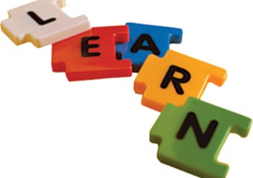Planning of goals is very important in our life let’s break
into three parts:
1.
How to choose life goals.
2.
How to get there.
3.
How to keep track of all your goals
and actions.
*How to choose life goals
There is no perfect answer here. Some people have known for a while now what
they really want, but just haven’t pursued it, and for them, it just takes a
little contemplation to realize what they’ve wanted all along. Others will have
a more difficult time, as they have never figured out what their dream is, or
what they’d like to accomplish. For them, I’d make a few suggestions:
4.
Brainstorm — make a list of all the
things you’d like to do in life, things that sound fun and exciting and
wonderful, and then choose the best of the list.
5.
You don’t have to come up with your
life goals right now. You could just think of something you’d like to achieve
over the next 6 months to a year, and continue to explore different things
until you find your dream.
*How to get there
If you know your goals, the next question is how to get there. A great method
that I’ve seen numerous times, most recently by Mark Joyner in his Simple*ology system, is called backward planning, a method used by the
military. Basically, here’s how it works:
- Have a clearly defined goal with a clearly defined
outcome — you should be able to visualize what it looks like when you’ve
accomplished the outcome.
- What is the last thing you’ll need to do to
achieve that outcome? If your goal is to publish a novel, for example, the
last thing you’ll need to do (before the publisher does the layout and
design, printing, marketing, etc.) is edit and submit the final draft.
- What is the thing you’ll need to do just before that
step? In the above example, you might want to get an outside editor to
review your draft and give your criticisms and suggestions and edits.
- What is the thing you’ll need to do before that step?
In the example, you’d need to do a revised draft to submit to your editor.
- And so on, until you get to the first step. The first
step is what you need to focus on. In the novel example, you might have
“brainstorm novel ideas” as your first step.
If you follow this plan, you’ll have
a step-by-step guide to achieving your goal. Now you just need a way to track
your goals and achieve them.
*How to track and achieve your goals
– a simple method
As Bob suggests, it would take a well-planned form or software to track a bunch
of goals, broken down by periods of your life (1 year, 5 years, 10 years, etc).
That can be very complicated, as I’ve discovered myself.
So how can you simplify this? Of
your life goals, choose one to accomplish within the next 12 months. If
none of them can be accomplished in 12 months, choose a sub-goal of one of your
life goals to accomplish in 12 months. And only choose ONE goal. Here’s an
example:
Life goal: build my dream house
1 year goal: save $5,000 towards a down payment for my dream house
Once you’ve chosen your 1 year goal
(and remember, only choose one — not one for each area of your life, but just one),
then choose a medium-term goal that you can accomplish in 3-6 months. It should
be a big chunk of your 1 year goal. For example:
medium-term goal: save $2,500 in 6 months
Then choose a short-term goal you
can accomplish in 1-2 weeks. For example:
short-term goal: set up automatic deductions from my paycheck to go
straight to savings — amount: $200 per paycheck.
The reason you should only focus on
one goal at a time is that it’s hard to track a whole bunch of goals, and it’s
hard to maintain focus on more than one goal at a time. If you just have to
accomplish one thing this week, you can really put your energy into making it
happen. But if you need to do 3-5 things in the next two weeks, it’s much more
likely that you won’t do any of them.
So, focus on your short-term goal
(1-2 weeks) and then when you complete it, choose the next short-term goal to
get you to your medium-term goal. Once the medium-term goal is accomplished,
choose a new medium-term goal to get you to your long-term goal (1 year). Once
your long-term goal is accomplished, set your sights on a new long-term goal.
Keep this up, and you’ll achieve a lot.
Here’s another example:
1 yr goal: Quit my job and work from home
medium-term goal: start an online business that will bring me income
short-term goal: brainstorm and research ideas for online business
I’ve found that this simplified
system does a lot to helping me stay focused. It’s also hard to only choose one
goal, as we always want to do 10 goals, but I think it’s worth it to decide
what’s most important.
And the goal-tracking system is
simple: on a simple 3×5 index card (or any sheet of paper), write down three
things: your 1-year goal, your medium-term goal, and your short-term goal. When
you accomplish the short-term goal, just cross it off and write a new one. It
doesn’t require any fancy software or planning system.
The key is to maintain focus on your
one goal, and to put all your energy into achieving it. Don’t forget it, don’t
be distracted from it. Let it be the point on the horizon that you continually
keep in sight, moving around obstacles but constantly heading towards that
point. Maintain your focus, and you’ll achieve it.

